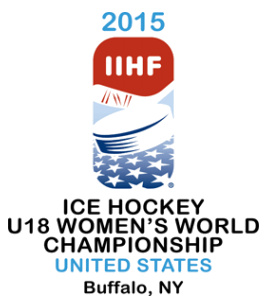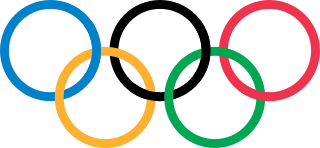
The Ice Hockey World Championships are an annual international men's ice hockey tournament organized by the International Ice Hockey Federation (IIHF). First officially held at the 1920 Summer Olympics. The IIHF was created in 1908 while the European Championships, the precursor to the World Championships, were first held in 1910. The tournament held at the 1920 Summer Olympics is recognized as the first Ice Hockey World Championship. From 1920 to 1968, the Olympic hockey tournament was also considered the World Championship for that year.
The 2005 Men's Ice Hockey Championships were held March 7 – May 15, 2005, in 7 cities in 6 countries: Vienna and Innsbruck, Austria (Championship); Debrecen, Hungary ; Eindhoven, the Netherlands ; Zagreb, Croatia ; Belgrade, Serbia and Montenegro ; Mexico City, Mexico. The competition also served as qualification for division placements in the 2006 competition. It was a major professional tournament, because of the 2004–05 NHL labor dispute. This international event was the 69th such event sanctioned by the International Ice Hockey Federation (IIHF). The championship was won by the Czech Republic.
The 2006 Men's Ice Hockey World Championships was the 70th such event hosted by the International Ice Hockey Federation. Teams representing 45 countries participated in four levels of competition. The competition also served as qualifications for division placements in the 2007 competition. In the Division I Championship held in April, Germany and Austria were promoted to the Championship division while Israel and Croatia were demoted to Division II. In the Division II competition, Romania and China were promoted, South Africa and New Zealand were relegated to Division III. In the Division III competition, Iceland and Turkey were promoted to Division II for 2007.
The 2002 Men's Ice Hockey World Championships were held between 26 April and 11 May 2002 in Gothenburg, Karlstad and Jönköping, Sweden.

The 2008 IIHF World Championship was played between May 2 and May 18, 2008 in the Canadian cities of Halifax and Quebec City (Quebec). The two venues were the Halifax Metro Centre and the Colisée Pepsi. The tournament was won by Russia which claimed its first gold medal since 1993.
The 2009 Men's Ice Hockey World Championships was the 73rd such event hosted by the International Ice Hockey Federation. Teams representing 46 countries participated in four levels of competition. The competition also served as qualifications for division placements in the 2010 competition. In the Division I Championship held in April, Kazakhstan and Italy were promoted to the Championship division, while Australia and Romania were demoted to Division II. In the Division II competition, Serbia and South Korea were promoted, North Korea and South Africa were relegated to Division III. In the Division III competition, New Zealand and Turkey were promoted to Division II for 2009.
Hockey at the 2010 Winter Olympics was held at Rogers Arena in Vancouver, home of the National Hockey League's Vancouver Canucks, and at UBC Winter Sports Centre, home of the Canadian Interuniversity Sport's UBC Thunderbirds. Twelve teams competed in the men's event and eight teams competed in the women's event. Canada won both tournaments with victories against the United States, while Finland won both bronze games, however against different opponents.

The IIHF Women's World U18 Championship, officially the IIHF Ice Hockey U18 Women's World Championship, is an annual ice hockey tournament for national women's under-18 (U18) ice hockey teams, administered by the International Ice Hockey Federation (IIHF). It is the junior edition of the IIHF Women's World Championship and participation is limited to female ice hockey players under 18 years of age.
The IIHF Inline Hockey World Championships were an annual international men's inline hockey tournament organized by the International Ice Hockey Federation (IIHF). The first World Championship was held in 1996 in which eleven nations participated. In 2003, sixteen nations took part and were split into two divisions. The top eight teams played for the World Championship and the other eight played for the Division I title. The last format in use featured the World Championship, Division I and three regional qualification tournaments. The World Championship and Division I tournament were played on odd years and the qualification tournaments were played on even years. The United States was the tournament's most dominant team, winning the World Championship seven times. After 20 editions, the IIHF cancelled the tournament in June 2019.
The IIHF World Ranking is a ranking of the performance of the national ice hockey teams of member countries of the International Ice Hockey Federation (IIHF). It is based on a formula giving points for each team's placings at IIHF-sanctioned tournaments over the previous four years. The ranking is used to determine seedings and qualification requirements for future IIHF tournaments. The current leader in rankings is Canada in both men's and women's play.

The 2006 IIHF World Championship was held in between 5–21 May 2006 in Riga, Latvia. It was the 70th annual event, and was run by the International Ice Hockey Federation (IIHF).

The ice hockey competitions of the 2014 Winter Olympics were played at two venues, located 300 meters from the other, within the Olympic Park in Sochi, Russia. The Bolshoy Ice Dome, which seats 12,000, resembles a Fabergé egg. The Shayba Arena, seating 7,000, was supposed to be a moveable structure but eventually stayed in Sochi. Both venues are international sized.

The 2012 IIHF World Women's Championships was the 14th such event hosted by the International Ice Hockey Federation and took place in Vermont, United States, at the Gutterson Fieldhouse in Burlington, and the Cairns Arena in South Burlington. The competition also served as qualifications for the 2013 competition, and the 2014 Olympics. The Top Division was contested between eight teams from April 7 to April 14, 2012, in Burlington and was hosted by USA Hockey.

The 2014 World Junior Ice Hockey Championships was the 38th edition of the Ice Hockey World Junior Championship (WJHC), hosted in Malmö, Sweden. The 13,700-seat Malmö Arena was the main venue, with the smaller Malmö Isstadion the secondary venue. It began on December 26, 2013, and ended with the gold medal game on January 5, 2014.

The 2015 World Junior Ice Hockey Championships was the 39th edition of Ice Hockey World Junior Championship, played from December 26, 2014 to January 5, 2015. It was co-hosted by Toronto, Ontario, and Montreal, Quebec, Canada, and organized by Hockey Canada, Hockey Quebec, the Ontario Hockey Federation, the Montreal Canadiens, Maple Leafs Sports and Entertainment and Evenko. Games were split between Air Canada Centre in Toronto and Bell Centre in Montreal, with Montreal hosting Group A matches and two quarter finals, and Toronto hosting Group B, along with the relegation games, two quarter finals, along with the semi-finals, bronze medal, and gold medal games.

The 2013 IIHF Women's World Championship was the 15th world championship sanctioned by the International Ice Hockey Federation (IIHF) and was the last world championship before the 2014 Winter Olympics. The tournament was hosted in Ottawa, Ontario, Canada, and was primarily played in small community arenas, including the Nepean Sportsplex, but most games were held in Scotiabank Place arena.

The 2015 IIHF Women's World Championship was the 16th such event organized by the International Ice Hockey Federation. The tournament was played in Malmö, Sweden, from 28 March to 4 April 2015. Venues included the Malmö Isstadion, and Rosengårds Ishall.

The 2015 IIHF World Women's U18 Championships was the eighth World Women's U18 Championship. The top division tournament was played in Buffalo, United States, from 5 to 12 January 2015. Twenty nations played in three levels, with promotion and relegation for the top and bottom teams at each level.

The 2016 IIHF Women's U18 World Championship was the ninth Women's U18 World Championship in ice hockey organized by the International Ice Hockey Federation (IIHF).

The women's tournament in ice hockey at the 2022 Winter Olympics was held in Beijing, China between 3 and 17 February 2022. Ten countries qualified for the tournament; six of them did so automatically by virtue of their ranking by the International Ice Hockey Federation, one, China, automatically qualified as hosts, while the three others took part in a qualification tournament.













